Qatar's housing market remains depressed
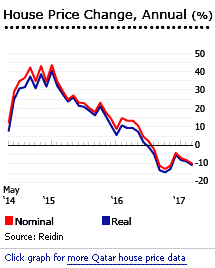 Qatar's housing market is now in trouble, amidst a sharp economic slowdown and the ongoing diplomatic crisis in the region.
Qatar's housing market is now in trouble, amidst a sharp economic slowdown and the ongoing diplomatic crisis in the region.
Qatar's nationwide real estate price index dropped 9.8% during the year to end-Q1 2017, according to the Qatar Central Bank (QCB), in contrast to the spectacular 13.37% rise during the same period last year. When adjusted for inflation, the fall is even bigger at 10.63%.
During the latest quarter, real estate prices fell by 1.1% (1.4% in real terms).
At The Pearl-Qatar, a QAR36.4 billion (US$10 billion) Riviera-style development located on the coast of Doha, second-hand freehold apartments are currently priced from QAR13,000 (US$) to QAR15,000 (US$) per square metre (sq. m.), with newly built houses priced above QAR17,000 (US$) per sq. m., according to DTZ Qatar.
Qatari real estate has boomed for three glorious years, fuelled by rapid population growth and a construction boom in preparation for the 2022 FIFA World Cup:
- In 2013, the real estate price index surged 20.74% (16.45% in real terms) from a year earlier.
- In 2014, the real estate price index soared by 34.67% (31.81% in real terms) from a year earlier.
- In 2015, real estate prices rose by 14.39% (10.75% in real terms) from a year ago.
However in 2016, the housing market slowed sharply, with the value of real estate transactions plunging by about 50%, after reaching an all-time high in 2015. Real estate prices fell by 4.08% (-5.23% in real terms) in 2016.
Surprisingly, demand has been rising recently. In April 2017, residential property sales increased, both in number and value, by 5.8% and 36%, respectively, as compared to the same period last year. However, demand is expected to fall againin the second half of the year and the overall housing market is expected to remain depressed in the medium term, because of the recent decision of several Arab countries, including Saudi Arabia and Egypt, to cut diplomatic ties with Qatar.
The Qatari economy grew by a modest 2.7% last year, after growing by an annual average of 4.2% during 2012-15, and 15.7% in 2008-11. The IMF expects the Qatari economy to expand by 3.4% this year and by another 2.8% in 2018, but these projections were released two months before the diplomatic tension occurred.
Foreigners are allowed to obtain freehold ownership in specific areas in Qatar: The Pearl, West Bay Lagoon, and Al Khor. Foreigners who buy in any of these areas are automatically granted residency, which extends to the owner's family, for the whole duration of the ownership.
Is Qatar's economy strong enough to weather diplomatic crisis?
The current diplomatic crisis will have a significant impact on Qatar's economy as key transport links are now being severed, making it difficult for the country to import and export goods.
Credit rating agency Standard & Poor's has lowered Qatar's long-term credit rating from 'AA' to 'AA-', with negative outlook.
"We believe this [the diplomatic crisis] will exacerbate Qatar's external vulnerabilities and could put pressure on economic growth and fiscal metrics," said S&P. "We expect that economic growth will slow, not just through reduced regional trade, but as corporate profitability is damaged because regional demand is cut off, investment is hampered, and investment confidence wanes," the credit agency added.
During the first week of June 2017, the Qatari riyal (QAR) dropped temporarily to its lowest level in twelve years. The riyal is essentially pegged to the US dollar.
Despite this, Finance Minister Ali Sherif al-Emadi is confident that the country can defend its economy and currency against the tough sanctions imposed by its neighboring Gulf countries.
"We are business as usual, and we are open for business," said Emadi. "We know that we might have one or two challenges here and there, but this is a country that is very resilient. We have the assets and security that we need."
Qataris one of the world's richest nations, with GDP per capita of almost US$61,ooo in 2016. The country is also the world's biggest exporter of liquefied natural gas (LNG). It has more than 15% of the world's proven gas reserves.
Demand is rising again
The number of residential properties sold increased 5.8% to 330 in April 2017 from the same period last year, according to the Ministry of Development Planning and Statistics. Likewise, the value of residential property transactions soared by more than 36% y-o-y to QAR2.85 billion (US$781 million) over the same period.
In April 2017:
- In Doha, the number of residential properties sold rose by 8.7% while the value of sales surged 2.14 times the previous year.
- In Al Rayyan, residential property sales also increased, both in number and in value, by 4% and 13.4%, respectively.
- In Umm Slal, demand is also soaring, with the number and value of sales increasing by 2.24 times and 2.59 times, respectively.
- In Al Wakra, the number of residential property sales fell by 32.7% while the value of sales plunged 58.1%.
- In Al Shamal, the number of sales fell by 25% while sales value dropped 20%.
- In Al Khor and Thakhira, the number of property sales increased 12.5% but sales value dropped 29.5%.
- In Al Daayen, the number of residential property sales fell slightly 2% but sales value rose by 5.6%.
Yields are excellent, though rents have stabilized
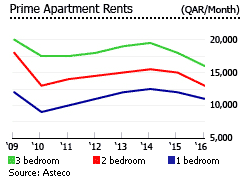
Gross rental yields in Qatar stand at around 10%, according to Alpen Capital, an investment bank. From 2014 to 2015, apartment rents have risen between 5% and 10% y-o-y in selected developments, particularly in the mid-range apartment segment in the Al Sadd area.
But in 2016 rents have started to stabilize, amidst reduced demand and an increase in the supply of prime and secondary housing units. In fact in some high-end locations, such as in The Pearl Qatar and WestBay, apartment rents fell between 5% and 10% in 2016 from a year earlier, according to DTZ Research.
There is also a marked increase in the number of tenantslooking for more affordable rental properties.
"2016 saw an increase demand for both apartments and villas in more peripheral suburbs such as Ein Khaled, Abu Hamour and Muaither, where good quality modern buildings are being developed and leased at lower rents than are available in more central neighbourhoods," said DTZ Research.
About 59% of all occupied housing units in Qatar are rented, according to QSA. The average expat household in Qatar spends more than a third of its annual income on rent, according to Colliers International.
Prime apartment rents, 2016:
- One-bedroom apartments rent for around QAR11,000 (US$3,014) per month.
- Two-bedroom apartments rent for around QAR15,000 (US$3,562) per month.
- Three-bedroom apartments rent for around QAR16,000 (US$4,384) per month.
Apartment rents, both in the primary and secondary market, are expected to fall in the remainder of 2017, amidst increased housing supply and reduced demand for corporate residential lettings, coupled with the worsening diplomatic rift in the region, according to local real estate experts.
Qatar issues permanent residence visas to foreigners buying freehold properties, under Law No. 17 of 2004. The visa remains valid as long as the foreigner keeps the property in his name.
Three-fourths of Qatar's population are foreigners, according to the Qatar Statistics Authority (QSA). About 82% of the population lives in Doha and Al Rayyan.
Construction sharply up
The downward pressure on prices stems partly from a huge increase in the number of prime residential units completed last year, especially in The Pearl-Qatar, according to DTZ Research. New towers in Porto Arabia and Viva Bahriya are now near completion.
About 5,800 new homes are expected to be completed by year-end, according to leading consulting firm, ValuStrat.
Moreover, the number of residential building permits surged almost 22% y-o-y to 365 units in May 2017, according to the Ministry of Development Planning and Statistics.In May 2017, villas accounted for half of all new residential building permits issued, followed by houses (40%) and apartment buildings (5%).
By geographical area, Rayyan accounted for about 25% of all building permits issued in May 2017, while Doha comes close with 24% share. They were followed by Al Wakrah (18%), Al Da'ayen (14%), Umm Slal (8%), Al Khor (5%), Al Sheehaniya (3%), and Al Shamal (3%).
In 2016, the total housing stock, which includes apartments, villas and houses, stood at about 281,000 units.
A historically volatile property market

In 2009 housing prices in Qatar fell by as much as 40%, while residential rents dropped about 25%, due to the global financial meltdown, according to Century 21 Qatar. Then in 2010, housing prices fell again by about 4%, according to Saudi-based banking firm, Samba Financial Group.
Prices stabilized in 2011, thanks to Qatar's spectacular economic growth. From 2012 to 2015, the property market expanded strongly due to steady job growth in non-hydrocarbon sectors such as finance, hotels, restaurants, and trade and transport. The country's population reached almost 2.4 million in 2015, up by about 9% from the previous year, reflecting a large influx of expatriates.
However in 2016, real estate prices fell again. However the slowdown in the housing market is not expected to last, given the country's rapid population growth.

"With Qatar's population growth set to increase by over 7% per annum in the coming years, the real estate market will need to expand more quickly to keep pace and avoid overheating the market," said Johnny Archer of DTZ Qatar.
A rebound in oil prices has also buoyed the property market.
"The recent increases in oil prices, buoyed by OPEC's agreement in November to control oil production, has restored economic confidence to Qatar following a period of uncertainty. DTZ anticipate that this may lead to an increase in demand for apartment and villa units," said DTZ Research.
However, it remains to be seen how the ongoing diplomatic crisis will impact Qatar's property market.
Interest rates and the mortgage market
Qatar National Bank (QNB), the country's leading financial institution, offers home and land financing at rates as low as 4.35%. The maximum loan offered to expatriates is QAR3 million (US$818,600) with a term of not more than 15 years. One can borrow up to 70% of the value of the property.
In 2016, the amount of real estate loans outstanding, which include land purchases, property developments, and residential and commercial buildings, rose by 7.65% y-o-y to QAR130 billion (US$35.47 billion).
The size of Qatar's mortgage market is estimated at 15% to 25% of GDP. To further develop it, Qatar Chamber of Commerce and Industry is now drafting the country's first mortgage law.
In March 2017, Qatar Central Bank raised the overnight lending rate from 4.75% to 5% and the overnight deposit rate from 1% to 1.25%, while holding the repo rate unchanged at 2.25%.
Land prices continue to rise
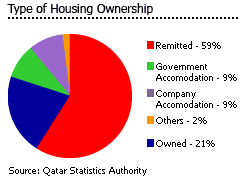
Massive construction in preparation for the 2022 FIFA World Cup continues to push up land prices. Al Shamal - home to the Al-Shamal Stadium - has seen very steep land price increases in the past four years. Dafna, West Bay and The Pearl registered land price increases of around 40% to 50% from two years ago. In Central Doha and Al Rayyan, land prices have risen between 30% and 35% over the same period. Land prices also increased moderately in South Doha and Umm Salal and in the previously underdeveloped Al Wakra and Al Daayen regions.
"Land prices appear to have increased at the fastest pace, followed by villas, where land is typically the most important cost component," according to an IMF report.
Land accounts for about half of the total value of real estate sales in Qatar every year, about 10 times higher than its proportion in developed markets, according to local property experts.
About 10 years ago, 500 sq.m. land on the outskirts of Doha sold for just QAR200,000 (US$54,572). Recently, land in the Al Mirqab area was worth QAR151,000 (US$41,202) per sq. m., while land in Doha's Old Ghanem neighborhood was worth QAR207,000 (US$56,482) per sq. m.
Foreigners can buy in 3 massive freehold areas:
The Pearl-Qatar
The Pearl is a QAR36.4 billion (US$10 billion) Riviera-style development, on a vast man-made island off the coast of Doha, the capital city. It provides over 40 kilometres of new coastline, linked to the mainland by a 4-lane, palm-tree lined highway. Doha's international airport is only 20 km away. It was here that Qatar offered its first freehold properties.
Developed by the United Development Company, The Pearl-Qatar has 16,000 villas and 25,000 apartments.
West Bay Lagoon
West Bay Lagoon is a 2 million sq. m. private beachfront compound, centred on the Zigzag Towers. At the northern tip of Doha's West Bay district, it is surrounded by artificial lagoons.
Barwa - Al Khor City
The Barwa - Al Khor project is a complete city, including seafront chalets, villas and elite apartments, covering 5.5 million sq. m. in Al Khor, 57 km north of Doha. The QAR30 billion (US$8.24 billion) Barwa Real Estate development will house 63,000 residents in 24,114 elite residential units. It also has hotels and sports facilities.
There are also 18 leasehold areas for foreigners
Foreigners can alternatively buy leasehold property for 99 years, renewable, in 18 designated areas, including the multi-billion dollar Lusail project, under Cabinet Decision No. 6 of February 2006. Foreigners can use the properties commercially or residentially, transfer the lease to another party, and sublet or rent.
Lusail City is an QAR164 billion (US$45 billion) waterfront community on the northern coast of Umm Salal, 15 km north of Doha. It is expected to house over 200,000 residents in 10 hotels, 3,000 villas, 12,000 apartments and retail areas.
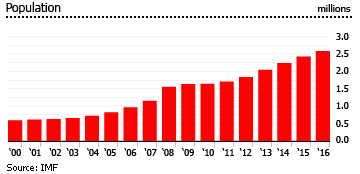
Developed by Qatari Diar, Lusail will cover an area of around 21 million sq. m. This mega project, in 16 zones, will contain an Energy City costing QAR9.5 billion (US$2.6 billion), and an Entertainment City, costing QAR5.5 billion (US$1.5 billion). The Lusail Iconic Stadium is also expected to be built in the city. The massive development is planned to be completed by 2020.
Another mixed use development project is Al Waab City, owned by Nasser Bin Khaled Group, which covers about 1.2 million sq. m. Incorporating "green strategies" and sustainable design principles, it is estimated to cost QAR13 billion (US$3.6 billion). The development includes 2,411 residential units, 232,715 sq. m. of commercial space, and a 425 room hotel complex.
Another notable development is Asia Towers, which will have four 55-storey towers near West Bay. Each tower will contain about 1,600 residential apartments. Developed by Ezdan Real Estate Company, it is estimated to cost QAR2.5 billion (US$686 million).
Other leasehold property developments in Qatar:
- Musheireb (Area #13)
- Frij Abdul Aziz (Area #14)
- Doha Jadeed (Area #15)
- Ghanem Al Qadeem (Area #16)
- Al Rifa Al Hitmi (Area #17)
- Al Salata (Area #18)
- Bin Mahmoud (Area #22)
- Bin Mahmoud (Area #23)
- Rawdat Al Khail (Area #24)
- Al Mansoura & Bin Dirham (Area #25)
- Najma (Area #26)
- Umm Ghuwailina (Area #27)
- Al Khulaifat (north and south) (Area #28)
- Al Sadd (Area #38)
- New Mirqab & Al Nasser (Area #39)
- Doha International airport (Area #48)
- Al Dafna & Onaiza & Al Qitar (Area #60 & 61 & 63)
- Al Kharaij & Jebel Thiya (Area #69 & 70)
The economy is growing less fast, and suddenly there's a big budget deficit.
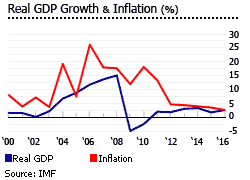
Economic growth has slowed sharply in recent years. Qatar's economy grew by just 2.7% in 2016, after expanding by 3.6% in 2015, 4% in 2014, 4.4% in 2013, 4.7% in 2012. Maybe that doesn't sound bad, but is amazing to recall how rapidly Qatar was growing the mid-2000s, when its economy grew by an average of 16.5% annually from 2004 to 2011.
And despite the global crisis, there was growth of 17.7% in 2008, 12% in 2009, 18.1% in 2010, and 13.4% in 2011.
In fact, last year's growth was actually the lowest in two decades.
The economy is projected to grow by a modest 3.4% this year and another 2.8% in 2018, according to the International Monetary Fund (IMF). However these projections might be lowered as the diplomatic rift in the region continues to escalate.
A ballooning budget deficit is also another problem. The country's budget deficit surged to 17.9% of GDP by end-2016, in sharp contrast with a surplus of 5.1% of GDP in the previous year, according to Qatar Central Bank . It was actually the first deficit in 15 years, as low oil prices weigh on revenues.
Last year, Qatar's external debt also climbed to a record 131% of GDP, from 105% in 2015, 79% in 2014, 80% in 2013, 85% in 2012 and 77% in 2011.
In April 2017, overall inflation was 0.6%, down from 0.9% in the previous month and 3.4% in the same period last year, according to Qatar Statistics Authority (QSA). While there are no official figures yet, consumer prices are expected to rise sharply, as its neighboring countries cut transport links with Qatar, making it difficult for the country to import and export goods.
In 2016, overall unemployment was 0.2%, the lowest in the Middle East, according to QSA. Qatar's highest-ever unemployment rate was 3.9%, seen in December 2011.